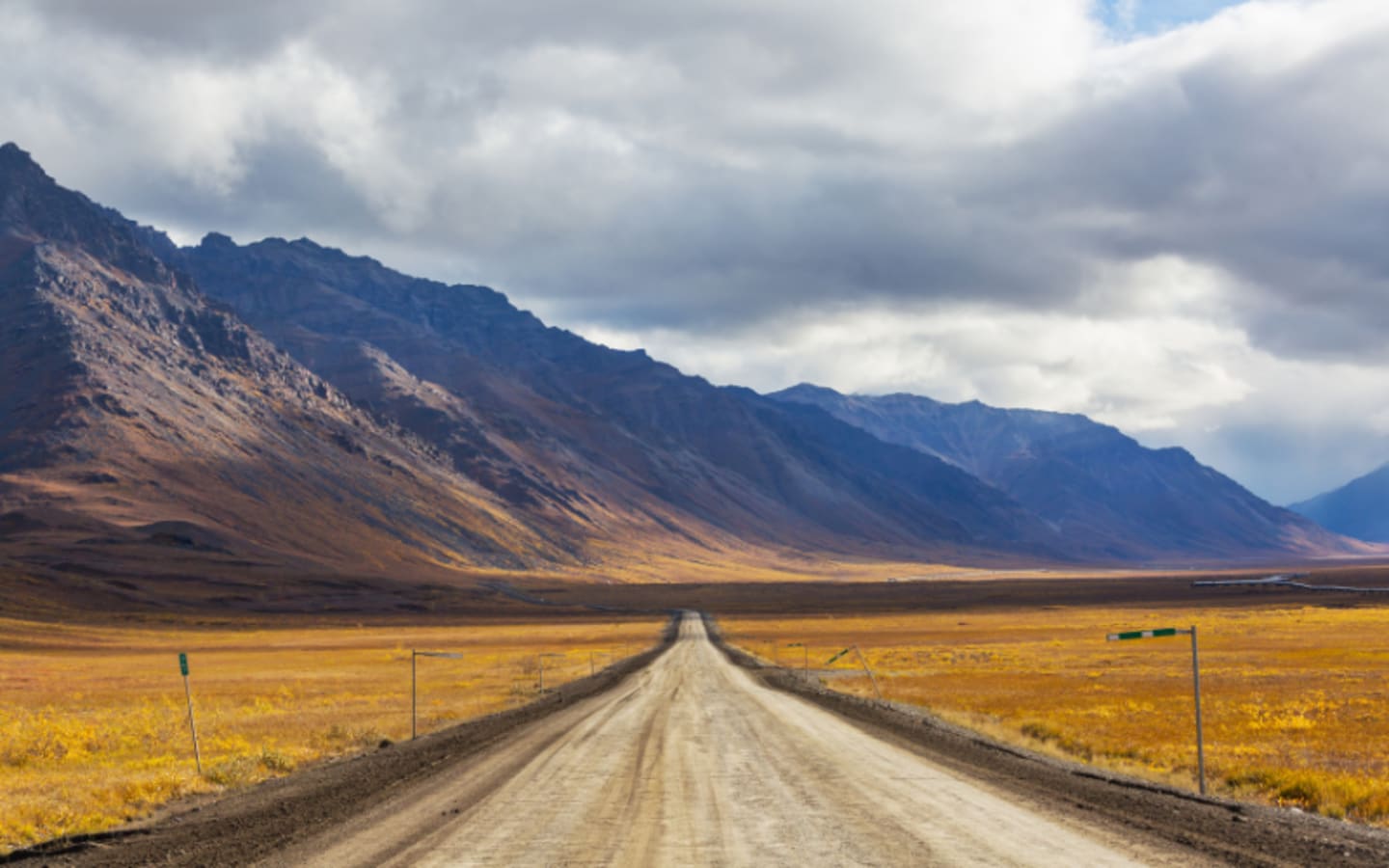A massive flood has wreaked havoc on the Dalton Highway, Alaska’s critical lifeline to the Prudhoe Bay oil fields, leaving a gaping 80-foot-wide hole in the road. The disaster struck on Saturday, forcing the closure of the only overland route to the North Slope’s economic hub. The Alaska Department of Transportation and Public Facilities pinpointed the cause as a failed culvert near milepost 315, which gave way under the pressure of surging floodwaters from the nearby Saginavirktok River. The closure spans a significant stretch between mileposts 305 and 356, cutting off access to Deadhorse, the industrial center serving the oil fields, roughly 100 miles away.
The flooding stems from a dramatic shift in weather patterns. After a chilly spring kept the North Slope locked in ice, a sudden warm spell triggered a rapid snowmelt, swelling rivers and overwhelming infrastructure. The Saginavirktok River, running parallel to much of the Dalton Highway, broke up quickly, sending torrents of water over the road. Beyond the main washout, additional trouble spots emerged. Water overtopped the highway at another location near milepost 315, eroding shoulders and weakening the road’s foundation. Closer to Prudhoe Bay, a partially blocked culvert trapped water against the elevated roadbed, creating further risks of damage. Crews from the Department of Transportation are working tirelessly, hauling substantial amounts of material to repair the breached culvert and stabilize the road. They aim to reopen the highway by Wednesday, though the timeline depends on the extent of the damage and ongoing weather conditions.
The Dalton Highway, often called the Haul Road, is no stranger to harsh conditions. Stretching over 400 miles from just north of Fairbanks to Deadhorse, this mostly gravel thoroughfare was built to support the Trans-Alaska Pipeline and remains vital for transporting supplies, fuel, and workers to the oil fields. Its remote location and rugged terrain make it a challenging route even in good weather, with steep inclines and limited services. The current closure has left truckers stranded and supplies dwindling, though air transport offers a costly alternative for critical needs. The highway’s role in Alaska’s economy cannot be overstated, as Prudhoe Bay’s oil production is a cornerstone of the state’s revenue.
This year’s flooding, while severe, doesn’t match the devastation of 2015, when massive sections of the highway were washed out, halting traffic for 18 days. Back then, overflow from the Sag River, combined with high winds and blowing snow, created chaotic conditions. The 2025 event, though less extensive, highlights a growing problem: climate change is making these disruptions more frequent. Thawing permafrost, a consequence of rising temperatures, is destabilizing the ground beneath the North Slope. This instability exacerbates river breakups, turning seasonal thaws into destructive floods. The National Weather Service issued flood warnings for the region, noting that rapidly melting snow and phenomena like aufeis—where water gushes out from under ice-capped rivers—add to the chaos.
For those who rely on the Dalton Highway, the closure is a stark reminder of nature’s power and the fragility of infrastructure in Alaska’s Arctic. The Department of Transportation is monitoring a 150-mile stretch of the road, addressing not only the main washout but also erosion at other vulnerable spots, like milepost 402, which has a history of damage. Crews are reinforcing these areas to prevent future breaches, but the underlying issue of a warming climate looms large. As permafrost continues to thaw, the ground shifts, challenging the engineering that keeps this vital artery open.
Travelers and workers in the region face immediate challenges. The closure leaves no detour options, and with spotty cell service—AT&T being the most reliable in Prudhoe Bay—communication is limited. Those planning to navigate the Dalton, whether for work or adventure, are advised to check real-time updates at 511.alaska.gov and carry emergency equipment like satellite phones or GPS devices. The highway’s isolation, while part of its allure for adventurers, amplifies the stakes when disaster strikes.
As repairs progress, the focus remains on restoring access quickly. The Alaska Department of Transportation is providing daily updates at 9 AM and 7 PM, keeping stakeholders informed until the road reopens. For now, the oil fields and the communities that support them wait, underscoring the delicate balance between human ambition and the unforgiving Alaskan wilderness.





